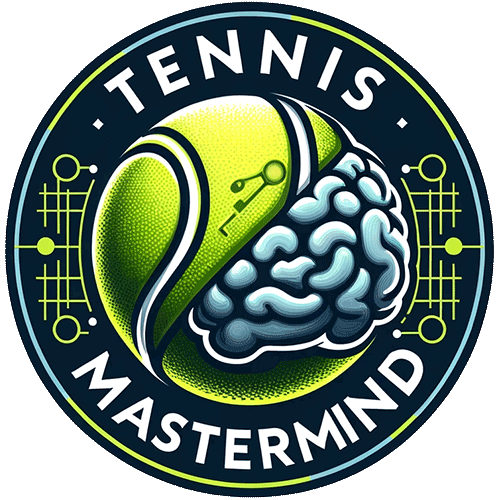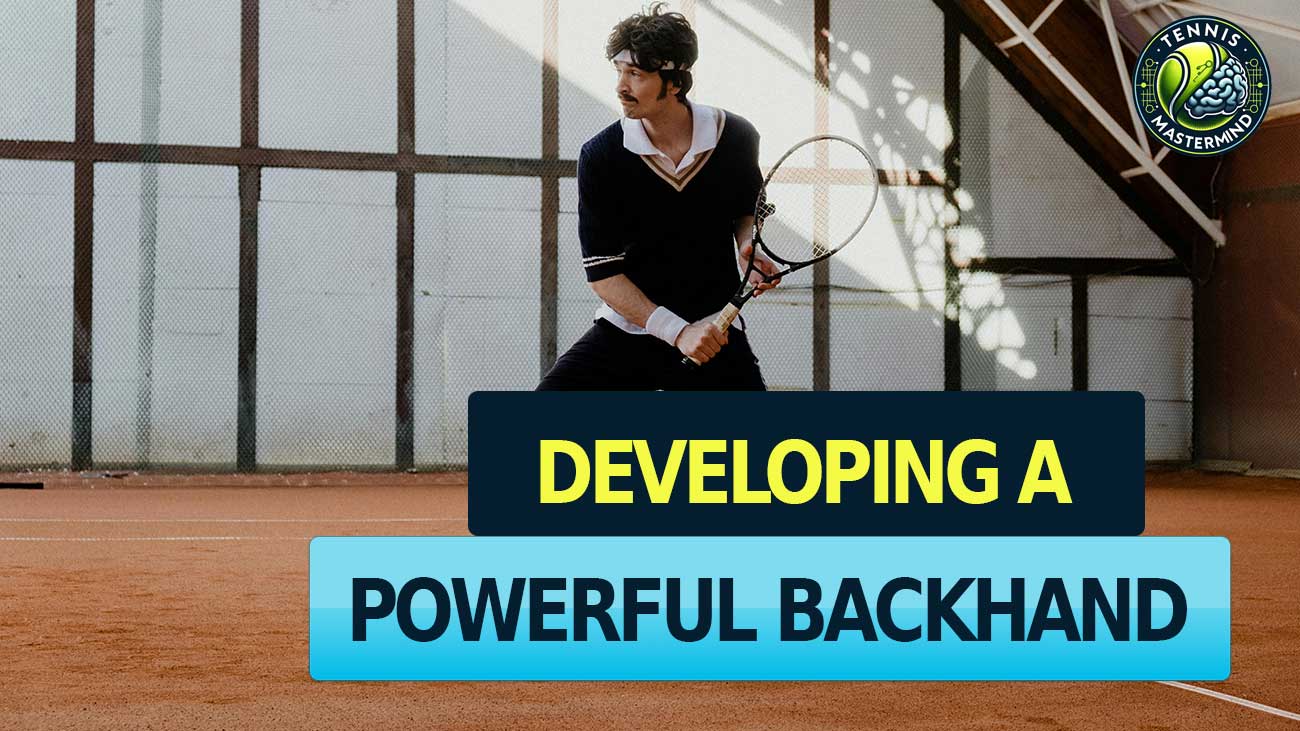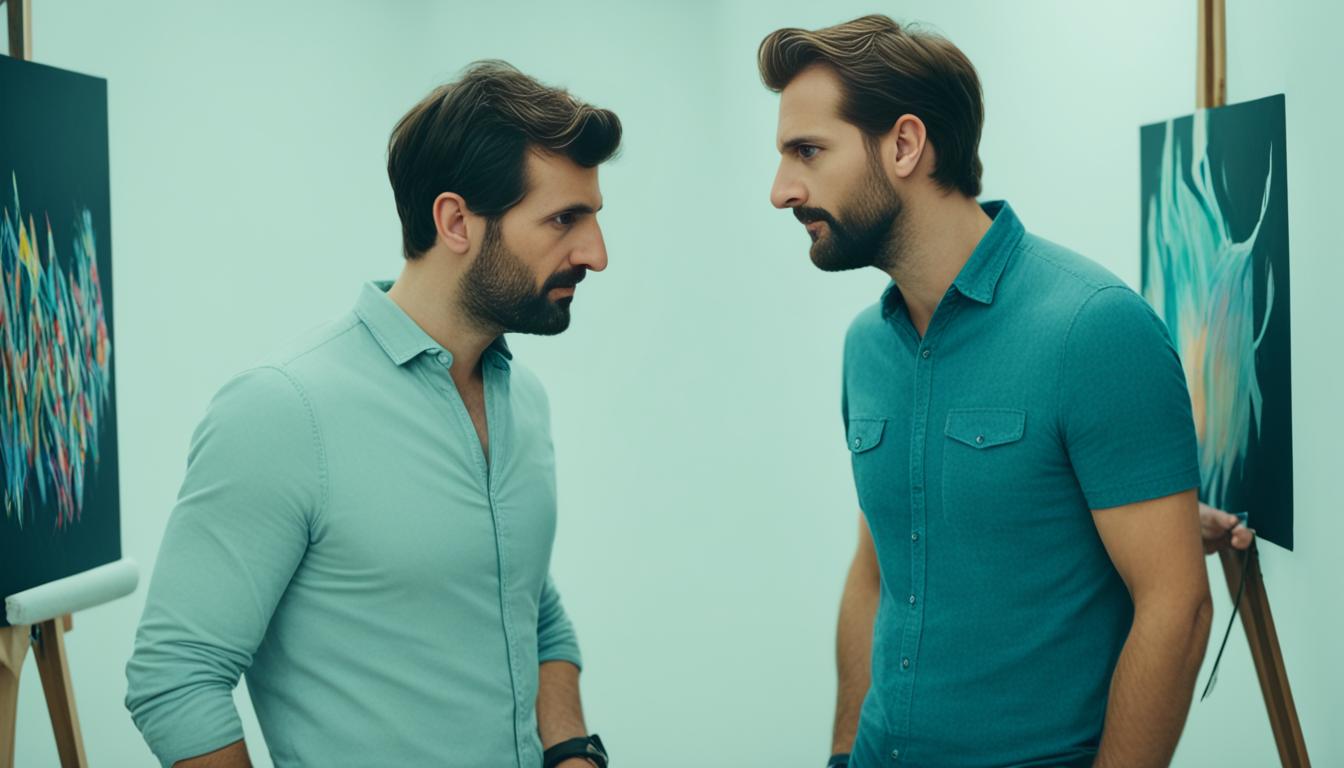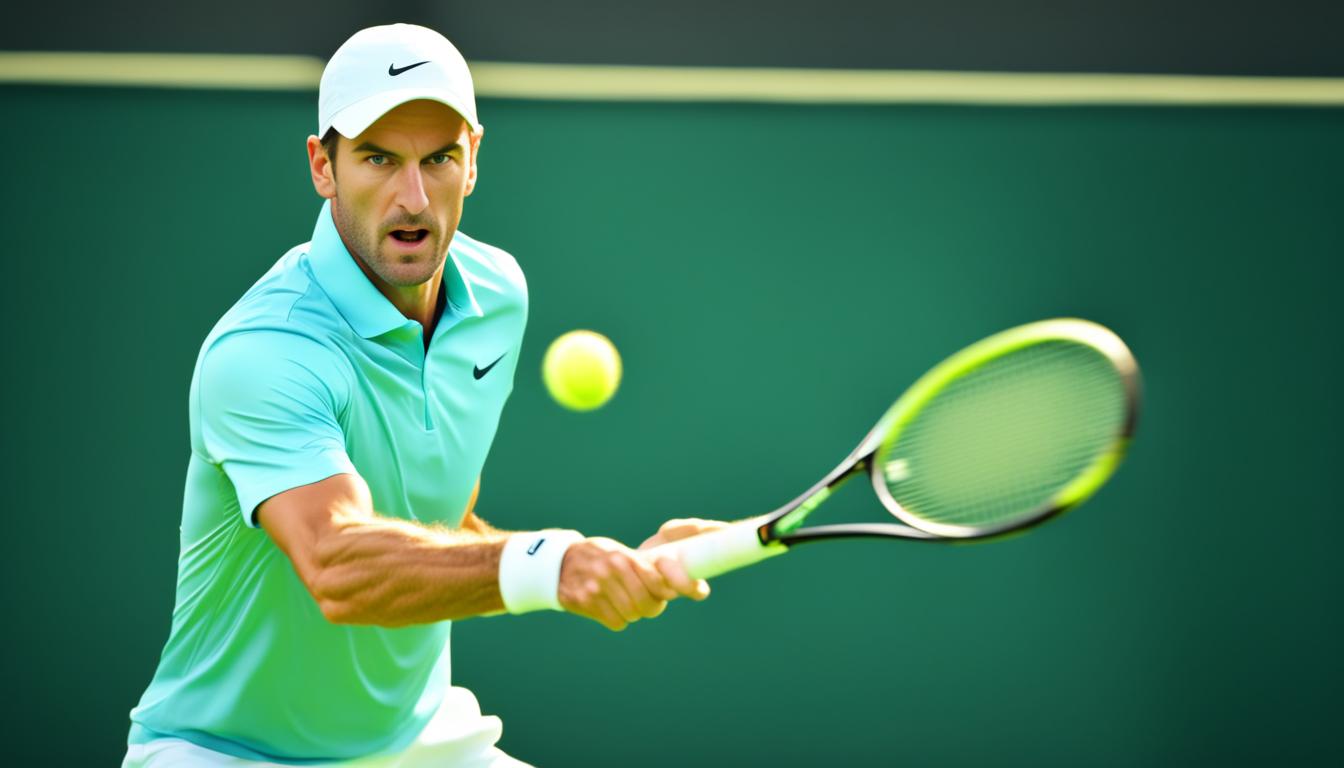Welcome to our comprehensive guide on developing a powerful backhand in tennis. Whether you are a beginner looking to improve your technique or an advanced player seeking to master your backhand, this article will provide you with valuable insights and tips to enhance your skills on the court.
The backhand is a crucial shot in tennis, and by focusing on key aspects, you can take your game to the next level. From making contact with the ball off to the side to controlling the racquet face and maintaining light and quick footwork, we will cover all the essential tennis backhand techniques to help you improve and excel in your backhand skills.
Key Takeaways:
- Developing a powerful backhand requires attention to key aspects such as racquet face control and footwork.
- Beginners should focus on basic fundamentals, including proper contact point and racquet grip.
- Intermediate players can start incorporating different types of spins, such as topspin and underspin, into their backhand shots.
- Advanced players should work on game strategy, identifying opponent weaknesses, and executing their favorite shots.
- Backhand improvement drills and techniques can help players refine their technique and enhance power.
Backhand Basics for Beginners
When it comes to mastering the backhand in tennis, beginners need to focus on a few fundamental tips. By understanding the correct contact point, controlling the racquet face, and finding a comfortable grip, beginners can lay a strong foundation for their backhand technique.
One crucial aspect to remember is the contact point. Aim to make contact with the ball slightly off to your left side when hitting a backhand. This positioning allows for better control and power in your shot. By striking the ball at the right contact point, you’ll achieve a solid connection and generate more consistency in your backhand strokes.
Racquet-face control is another key element to master. Pay close attention to the position of your racquet face as you make contact with the ball. Ensure that the strings are facing the desired direction at the moment of contact. This control will determine the direction and trajectory of your backhand shots, giving you the ability to place the ball exactly where you want it on the court.
Additionally, finding a comfortable grip is essential for a successful backhand. Experiment with different grip styles, such as the Eastern or Continental grip, to find the one that feels most natural in your hand. A comfortable grip allows for better racquet control and maneuverability, enabling you to execute your backhand with ease.
Lastly, beginners should focus on keeping their swings at a level that allows them to keep the ball in play. Avoid overly ambitious swings that may result in unforced errors. Instead, strive for a smooth and controlled backswing that sets you up for solid contact with the ball. This technique will help you maintain consistency and improve your shot placement.
A strong and reliable backhand is crucial for any tennis player, regardless of skill level. By implementing these beginner tips, you’ll be on your way to developing a solid foundation for your backhand technique.
| Beginner Tennis Backhand Tips |
|---|
| Avoid an excessive backswing. |
| Focus on the correct contact point. |
| Control the racquet face for desired trajectory. |
| Experiment with different grips for comfort. |
| Maintain a level swing for accuracy. |
Perfecting the Backhand for Intermediate Players
As intermediate players, we have developed a solid foundation for our backhand technique. Now is the time to take our backhand to the next level by incorporating more body movements and mastering different types of spins.
A key aspect of improving our backhand is understanding and practicing different spins, such as topspin and underspin. Topsin is a powerful weapon that allows us to hit the ball with greater pace and control. To execute a topspin backhand, we need to brush the ball from low to high, generating that coveted forward rotation.
Underspin, also known as slice, is another valuable spin for intermediate players. By brushing the ball from high to low, we create backspin, which can keep the ball low and make it difficult for our opponents to handle. Perfecting the underspin backhand opens up opportunities for drop shots and defensively placing the ball in hard-to-reach areas.
To produce the desired spin, we need to experiment with different racquet-face angles. For topspin, a slightly closed racquet face helps us generate more topspin, while for underspin, a more open racquet face is recommended. Give yourself time to practice and get comfortable with these different angles to ensure consistency in your shots.
Intermediate Tennis Backhand Tips
- Focus on incorporating body movements into your backhand, using your whole body to generate power and control.
- Experiment with different spins, such as topspin and underspin, to add variety and surprise to your shots.
- Practice brushing the ball from low to high for topspin and high to low for underspin.
- Work on finding the right racquet-face angle for each type of spin.
- Continue refining your footwork to ensure agility and quick recovery after each shot.
By perfecting the backhand, we become more well-rounded players on the court, capable of handling a variety of situations. The ability to hit different spins gives us an edge, forcing our opponents to adjust and react accordingly. Remember, consistent practice and dedication are essential for mastering these techniques.
| Spin | Description |
|---|---|
| Topspin | Forward rotation of the ball, achieved by brushing from low to high. Provides greater pace and control. |
| Underspin (Slice) | Backspin on the ball, generated by brushing from high to low. Keeps the ball low and creates difficult angles for opponents. |

Mastering the Backhand for Advanced Players
As advanced players, we have already honed our backhand skills and are ready to take our game to the next level. But how can we truly master our backhand and dominate on the court? It’s all about understanding our strengths, exploiting our opponent’s weaknesses, and strategically planning our shots.
One of the key aspects of mastering the backhand as an advanced player is having a deep understanding of our own strengths and capabilities. By identifying our favorite shots and playing to our strengths, we can gain an advantage over our opponents. Whether it’s a powerful cross-court backhand or a precise down-the-line shot, these are the shots we should focus on executing with precision and consistency.
But it’s not just about playing to our strengths; it’s also about exploiting our opponent’s weaknesses. By studying our opponents and identifying their vulnerabilities, we can strategically target their weak points and put them under pressure. Is their backhand their weaker side? Do they struggle with high balls or low slices? These are the questions we should be asking ourselves to develop a winning game strategy.
To illustrate this point, here’s a table that outlines different opponent weaknesses and the corresponding shots we can exploit to gain an advantage:
| Opponent Weakness | Shot to Exploit |
|---|---|
| Weak backhand | Cross-court backhand |
| Poor net play | Drop shot |
| Slow footwork | Deep, powerful shots to their backhand corner |
By analyzing our opponents and tailoring our shots accordingly, we can maximize our chances of success on the court. Remember, our goal should be to win points off our own racquets, rather than waiting for errors from our opponents.
“Confidence in the backhand is crucial. As advanced players, we should have the ability to go for our shots and win points in crucial moments.”
Finally, confidence in our backhand is essential for mastering this shot. We should have the belief in our abilities and the willingness to go for our shots, even in high-pressure situations. By mastering our backhand, we gain the power to dictate the direction and pace of the game, putting us in control of each point.
In conclusion, as advanced players, we have the skills and knowledge to take our backhand to the next level. By understanding our own strengths, exploiting our opponent’s weaknesses, and playing with confidence, we can truly master this essential shot and elevate our overall game.
Backhand Improvement Drills and Techniques
Looking to improve your backhand in tennis? Incorporating specific drills and exercises can help you enhance your technique and increase your backhand power. Here are some effective methods:
1. Short Backswings with Emphasis on Extension
When practicing your backhand, focus on keeping your backswing short and compact. This helps create an efficient and streamlined swing. Place emphasis on extending through the ball as you make contact, generating more power and control.
2. Rallying in the Alley
Increase your direction and consistency by practicing backhand rallies in the alley. This narrower space challenges your ability to control the ball and forces you to make precise shots. It’s a great exercise for improving your accuracy and footwork.
3. Lifting the Ball Higher
By lifting the ball higher over the net, you can gain safety and margin for error. This technique is particularly helpful when facing opponents who tend to play close to the net. Practice hitting your backhand with a higher trajectory, ensuring the ball clears the net comfortably.
4. Spin Development Drills
Adding spin to your backhand can give you an edge in terms of power and control. Experiment with different types of spin, such as topspin and underspin (slice). Incorporate drills that focus on developing and refining these spin techniques, allowing you to generate more spin and maintain control during rallies.
Consistency and repetition are key when incorporating these drills into your training routine. By dedicating time to improving your backhand through targeted exercises, you can enhance your technique and ultimately achieve a more powerful and effective backhand stroke.

Backhand Improvement Drills and Techniques
| Drill | Description |
|---|---|
| Short Backswing | Focus on a compact backswing with emphasis on extension through the ball for increased power and control. |
| Rallying in the Alley | Practice backhand rallies in a narrower space to improve direction, consistency, and footwork. |
| Lifting the Ball Higher | Develop the ability to lift the ball higher over the net, providing safety and margin for error. |
| Spin Development | Incorporate drills that focus on developing topspin and underspin techniques for added power and control. |
Conclusion
Developing a powerful backhand in tennis requires attention to various technical aspects, practice, and strategy. Whether you’re a beginner, intermediate player, or advanced competitor, mastering the backhand is essential to elevate your overall tennis game.
For beginners, focusing on the basic fundamentals is key. Make contact with the ball off to your left side, ensure racquet-face control, and find a comfortable grip. Keeping your swing level and maintaining light and quick footwork will help you keep the ball in play and build a solid foundation for your backhand.
Intermediate and advanced players can step up their backhand game by incorporating different types of spins, such as topspin and underspin. Experiment with racquet-face angles to produce the desired spin, and develop a keen understanding of your own strengths and your opponents’ weaknesses. By hitting your favorite shots to their least favorite spots, you can take control of the game and increase your chances of winning.
To refine your technique and enhance power, incorporate backhand improvement drills into your training routine. Short backswings with an emphasis on extending through the ball can help you generate more power. Rallying in the alley will improve direction and consistency, while lifting the ball higher will give you safety above the net. Additionally, spin development drills will add more control and power to your backhand.
By following these tips and dedicating time to practice, you can master your backhand and become a force to be reckoned with on the tennis court. So, grab your racquet, hit the courts, and let your powerful backhand take your game to new heights!




